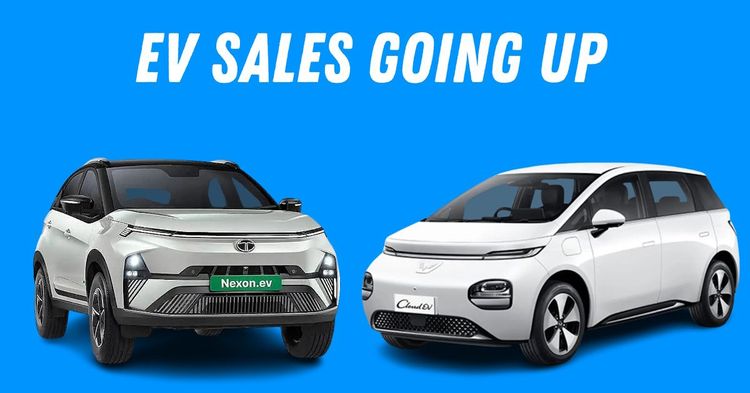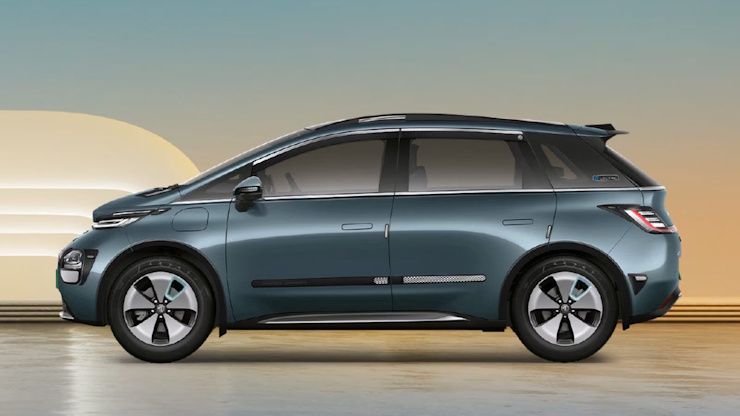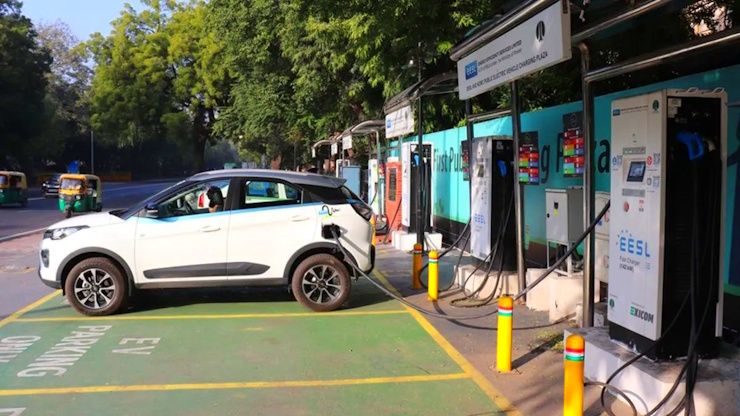India's EV Sales Surge But There is Catch!


India's electric vehicle (EV) market is undergoing a significant transformation, but the growth story is layered with complexities. While the country moves steadily towards electrification, the momentum is largely fueled by two-wheelers and three-wheelers, highlighting an evolving mobility landscape. These segments have seen rapid adoption due to lower costs, better incentives, and the practicality of EVs for short-distance travel and commercial applications. However, the same level of enthusiasm is yet to be seen in the passenger vehicle segment, raising questions about the broader adoption of electric mobility in India.

In the first 11 months of the fiscal year 2025, India's EV sector recorded an impressive 1.76 million unit sales, reflecting a sharp rise in consumer acceptance and manufacturer investment. Breaking it down further, electric two-wheelers accounted for over 1.01 million units, representing a robust 26% year-on-year growth. This growth has been spearheaded by leading players such as Ola, TVS Motor Co, Bajaj Auto, and Ather Energy, each of whom has been actively expanding their product lineups and investing in charging infrastructure to make EV adoption more seamless.
Electric three-wheelers, another critical segment of India's EV market, witnessed sales of 639,245 units, marking a 12% year-on-year growth. This segment now represents 57% of total three-wheeler sales, demonstrating its growing prominence in last-mile connectivity solutions. Companies such as Mahindra Last Mile Mobility, Bajaj Auto, and YC Electric have been instrumental in driving this change, offering cost-effective and efficient alternatives to traditional petrol and diesel three-wheelers.
On the other hand, electric passenger vehicles, while showing a year-on-year growth of 16%, remain a relatively small portion of the market, with 94,696 units sold. The segment continues to be dominated by Tata Motors, which holds a commanding 56% market share, followed by JSW MG Motor India at 27%. Despite these promising numbers, the road to widespread passenger EV adoption remains filled with hurdles.

Despite the overall surge in EV sales, the adoption of electric passenger cars has not been as rapid as expected. This is in stark contrast to the impressive uptake of electric two-wheelers and three-wheelers. While the latter segments have flourished due to cost advantages, government subsidies, and commercial viability, passenger EVs face a different set of challenges that have slowed their progress.
Several factors contribute to the slow uptake of electric passenger vehicles in India. Chief among them is the high initial cost of EVs, which remain 20-30% more expensive than their internal combustion engine (ICE) counterparts. Although the long-term operational costs of EVs are lower due to savings on fuel and maintenance, the steep upfront pricing remains a deterrent for many buyers.
Another major challenge is the lack of a widespread charging infrastructure. While metropolitan cities are gradually improving their EV charging networks, smaller towns and rural areas still face significant shortages. Without a reliable and accessible charging network, range anxiety continues to be a concern for potential buyers.
Range anxiety, in particular, has been a key psychological barrier to adoption. Many consumers remain hesitant to switch to EVs due to perceived limitations in driving range, even though newer models are gradually improving in this aspect.
Further complicating matters is India's dependence on imported components, particularly lithium-ion batteries, which form a significant portion of an EV’s cost. This reliance on foreign supply chains leads to higher production costs and price volatility, making it difficult to bring down the overall cost of ownership.
Recognizing the challenges facing the EV industry, the Indian government has introduced a range of initiatives aimed at boosting adoption and making EVs more viable in the long run.
The Faster Adoption and Manufacturing of Electric Vehicles (FAME II) scheme has been at the forefront of the government’s push for EV adoption, particularly focusing on electrifying public and shared transportation. The initiative offers subsidies and incentives to both manufacturers and buyers, encouraging the purchase of electric buses, taxis, and three-wheelers.
Additionally, the Production Linked Incentive (PLI) scheme has been designed to attract investments in domestic EV manufacturing, helping to create a self-sustaining industry that is less reliant on imports. The government has also taken steps towards reducing import duties on critical components to encourage local manufacturing and assembly of EVs.
Battery production has been another focus area, with incentives provided to companies investing in domestic battery manufacturing. This move is aimed at reducing dependency on costly imports and ensuring a more stable and affordable supply of batteries for EV manufacturers.
While the current trends indicate strong future growth, passenger EVs still have a long road ahead before they can become mainstream in India. Projections suggest that by 2030, electric passenger vehicle production could reach 1.33 million units, representing nearly 20% of total passenger vehicle output. The government has set an ambitious target of achieving a 30% EV market share by the same period, but several factors will determine whether this goal is achievable.
For India to successfully achieve its EV targets, a multi-faceted approach will be necessary. One key area that requires attention is expanding the EV charging infrastructure, ensuring that charging stations are not just concentrated in metro cities but also available across Tier-2 and Tier-3 towns.
Reducing the overall cost of EVs is another crucial factor. This can be achieved through increased localization of battery production and EV components, which will help lower manufacturing costs and bring EV prices closer to their ICE counterparts.
Additionally, consumer awareness campaigns can play a crucial role in overcoming range anxiety and misconceptions about EVs. Educating potential buyers about the long-term financial benefits, environmental advantages, and improving technology in the sector can drive higher adoption rates.
Lastly, policy stability and long-term incentives will be vital in ensuring the consistent growth of the EV industry. Frequent changes in government policies or subsidy structures could deter both manufacturers and consumers from committing to EVs in the long run.
India's EV market is undoubtedly accelerating, but the journey is far from linear. While electric two-wheelers and three-wheelers are setting the pace, passenger EVs still have hurdles to overcome before they become a mainstream choice for Indian consumers. The coming years will be critical in shaping India's electrification journey, determining whether the country can transition from ambitious policy goals to a reality where EVs dominate the roads.
The shift towards electric mobility in India is not just a possibility—it is an unfolding narrative of technological progress, market evolution, and infrastructural transformation. The pace of this transformation will depend on how effectively the challenges are addressed, ensuring that EVs are not just an urban luxury but a viable option for every Indian looking for sustainable mobility.